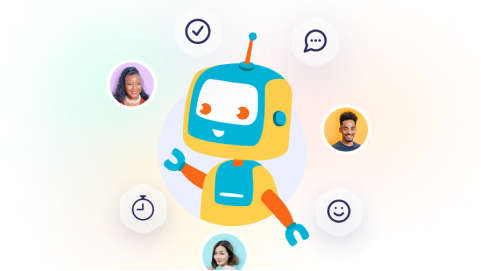A conversation with Guillermo Olivas, Senior Atlassian Certified Jira Admin and Agile + ITSM Specialist
Agile Journeys is an ongoing series of candid conversations with Agile professionals from across the spectrum – from technical leads and enterprise architects to Scrum Masters, Agile coaches, and transformation leaders. Each conversation dives into the realities of Agile transformations, adoption, and scaling: the frameworks that work (and the ones that don’t), the processes and tools that enable change, the techniques and tips that make a difference, and the challenges teams face along the way.
Our goal is simple: share unfiltered, practical insights from the people living Agile every day – so you can learn, adapt, and make your own teams thrive.
In this installment, we sat down with Guillermo Olivas (LinkedIn), a Senior Atlassian Certified Jira Administrator, Agile + ITSM Specialist, CSM, ITIL practitioner, and integrations expert. Guillermo has spent years helping organizations make the most of Atlassian tools like Jira, Confluence, and Service Management — while driving Agile adoption and continuous improvement at scale.
The Path Into Atlassian and Agile
Guillermo’s journey into Agile didn’t start in the boardroom — it began with the day-to-day work of configuring Jira projects.
“I didn’t start by thinking, ‘I’ll be an Agile specialist.’ My entry point was Jira administration — configuring, cleaning up messy projects, making things work for teams. Over time, I realized that the technical side was only part of the story. What really mattered was helping teams collaborate better and move faster. That’s what brought me into Agile.”
This technical grounding gave Guillermo a unique vantage point: he’s seen first-hand how tools can either accelerate or block agility, depending on how they’re implemented.
Tools as Enablers of Transformation
At Catapult Labs, we often say: tools don’t create Agile — but the right tools, thoughtfully implemented, can accelerate it. Guillermo’s experience proves the point.
“Jira is powerful, but if it’s not aligned with your process, it becomes overhead. My job is often to reframe things: not just ‘how do we configure Jira,’ but ‘how do we want to work, and how can Jira support that?’”
In remote work environments, this alignment is critical. If workflows become too rigid or complex, teams lose transparency and drown in overhead.
💡 See also: Integrating Agile Tools with Jira for seamless workflows. .
Continuous Improvement at Scale
Guillermo has helped large enterprises where Agile meets ITSM — often seen as incompatible worlds.
“One of the challenges is when Agile meets ITIL. People think they’re incompatible, but they’re not. If you understand value streams, you can align incident management, change requests, and problem-solving with Agile thinking. It’s about reducing friction while maintaining governance.”
Balancing flexibility and control, agility and governance is one of the defining challenges of enterprise-level transformations, and Guillermo is very well aware of it.
Advice for Agile Practitioners
When asked for advice to other Jira admins, Scrum Masters, or Agile coaches, about to work in a new team, Guillermo didn’t hesitate:
“Start with empathy. Too often we jump into frameworks, tools, or automation without listening. People resist change because they don’t feel heard. If you start by understanding their pain points, you can design solutions that stick.”
This reminder — that Agile is ultimately about people — is at the heart of Agile Journeys.
Looking Ahead
Today, Guillermo continues to expand his expertise across automation, integrations, and scaling Agile practices for distributed teams. His blend of deep Atlassian technical mastery and Agile/ITSM leadership makes him a trusted partner for organizations navigating complex change.
Follow Guillermo on LinkedIn to learn more from his ongoing work.
And explore more stories from Agile leaders like Guillermo in the Agile Journeys series on the Catapult Labs blog.
✨ Key Takeaways
- Tools are enablers, not solutions.
- Align Jira with how you want to work, not the other way around.
- Agile and ITSM can coexist if you focus on value streams.
- Empathy is the foundation of any sustainable transformation.

